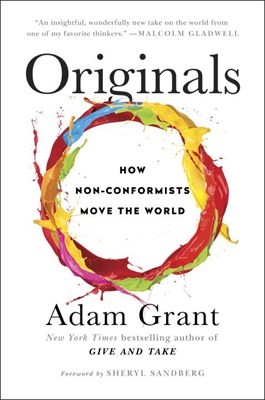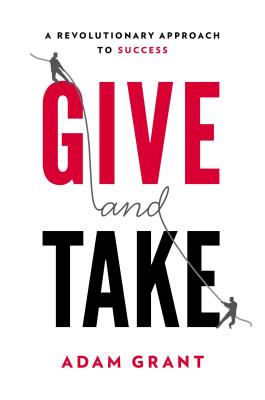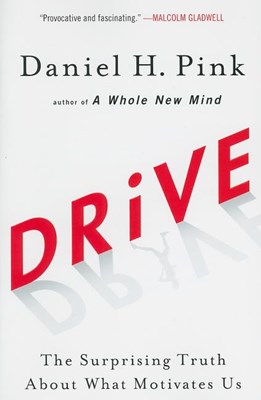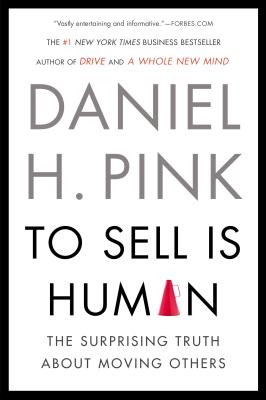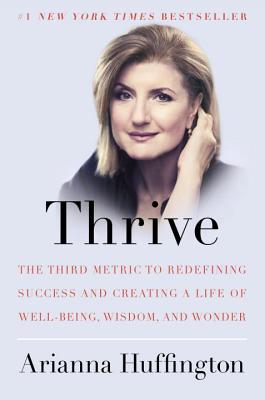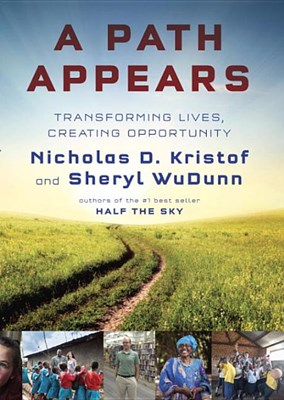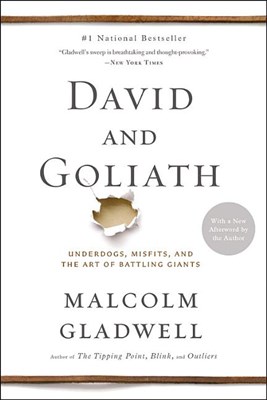A Q&A with Adam Grant
February 02, 2016
Adam Grant's new book, Originals, drops today. He was kind enough to take some time during what's surely a busy launch to answer some questions for us.

"There’s a wealth of evidence that dissenting opinions improve decisions even when they’re wrong, because they challenge people to reevaluate their assumptions and consider new perspectives. If everyone is passionate about the same values, it’s easy to miss out on those contrarian views."
—Adam Grant
As I began writing this introduction, I put something down about how Adam Grant is a rising star in the field of social science, and a leading voice in a new kind of business book. I quickly erased that opening, because it's just not quite true. His star isn't rising, it is already fully ascended. His new book, Originals: How Non-Conformists Move the World, is being released by Viking today, and it is sure to become an immediate best-seller. Be sure to get to your local bookshop as soon as possible to secure yourself a copy so you know what everyone is talking about. To start you out this morning, we have a Q&A with the author for you.
But first, a little about the man himself…
ABOUT THE AUTHOR
Adam Grant is Wharton’s top-rated professor and a New York Times writer on work and psychology. He has been recognized as one of the world's 25 most influential management thinkers, HR’s most influential international thinkers, the world’s 40 best business professors under 40, and one of Malcolm Gladwell’s favorite social science writers. Previously, he was a record-setting advertising director, a junior Olympic springboard diver, and a professional magician.
Adam is the author of Originals, which explores how individuals champion new ideas and leaders fight groupthink. He will be speaking about it on the TED main stage in Vancouver. His first book, Give and Take, was a New York Times bestseller translated into 27 languages and named one of the best books of 2013 by Amazon, Apple, the Financial Times, and The Wall Street Journal—as well as one of Oprah's riveting reads and Harvard Business Review’s ideas that shaped management. He has been profiled on The Today Show and in The New York Times Magazine cover story, "Is giving the secret to getting ahead?”
Adam’s speaking and consulting clients include Google, the NFL, Merck, Goldman Sachs, Pixar, Facebook, Johnson & Johnson, the United Nations, the U.S. Army and Navy, and the World Economic Forum, where he has been honored as a Young Global Leader. His recent New York Times articles include Raising a moral child, which has been shared over 300,000 times on social media, and Madam C.E.O., get me a coffee with Sheryl Sandberg.
Adam was tenured at Wharton while still in his twenties, and has received the Excellence in Teaching Award for every class that he has taught. He is the founder and host of the Authors@Wharton speaker series, and co-director of Wharton People Analytics. He has designed experiential learning activities based on The Apprentice in which students have raised over $325,000 for the Make-A-Wish Foundation while developing leadership, influence, networking and collaboration skills. He serves on the Lean In board.
Adam earned his Ph.D. in organizational psychology from the University of Michigan, completing it in less than three years, and his B.A. from Harvard University, magna cum laude with highest honors and Phi Beta Kappa honors. He has more than 60 publications in leading management and psychology journals, and his pioneering studies have increased performance and reduced burnout among engineers and sales professionals, enhanced call center productivity, and motivated safety behaviors among doctors, nurses and lifeguards. His studies have been highlighted in bestselling books such as Quiet by Susan Cain, Drive and To Sell Is Human by Daniel Pink, Thrive by Arianna Huffington, A Path Appears by Nicholas Kristof and Sheryl WuDunn, and David and Goliath by Malcolm Gladwell.
*Bio from the author's website
A Q&A with Adam Grant
800-CEO-READ: One of the first things you do in the book is debunk the myth that originators of new ideas, insights, innovations, and businesses (or originals) are more inclined to take risks than others. You clarify how those building the new world often do so with a foot in the old, holding on to their day jobs and hedging their bets until they’re almost forced to go all-in. In fact, evidence suggests that successful entrepreneurs may be more risk-averse than most others. Can you explain this for us, and why the myth of the entrepreneur as a go-for-broke, guns-blazing swashbuckler persists?
Adam Grant: A groundbreaking study recently showed that entrepreneurs who keep their day jobs and start companies on the side are 33% less likely to fail than those who dive right in. Successful entrepreneurs know it’s a mistake to put all their eggs in one basket. Look at Elon Musk: yes, he put a lot on the line, but he started not one but two companies. If SpaceX didn’t work out, he still had Tesla. I think the myth of the daredevil entrepreneur persists because it sounds heroic and romantic, and we often leave out the cautious part of the story. Bill Gates didn’t drop out of Harvard; he took a leave of absence. And he didn’t do that until he had a year of software sales under his belt and financial support from his parents. Sound risky to you?
8cr: I love the concept of "vuja de." Can you tell us how you define that, and its importance in moving the world forward? (Please feel free to reference George Carlin’s concept of this phenomenon and how yours may differ.)
AG: It’s the opposite of déjà vu. George Carlin described it as “the strange feeling that, somehow, none of this has ever happened before.” But I prefer Karl Weick’s definition: “seeing old things in new ways.” That version of vuja de is a huge force behind creativity and change, because it leads us to fresh ideas. It’s waiting in line for a taxi, and suddenly wondering why you can’t just get one of the empty seats in another car driving by. Vuja de: Uber is born.
8cr: We tend to peg “middle management types” as being conformist, conservative, and uncreative, but you suggest that it may be their position in organizations and life that makes that true, not their underlying values, personalities, or desire for advancing change and speaking up. Why is that, what does it mean specifically for women and minorities, and what can we do as individuals and organizations to overcome these challenges and support progress and encourage original ideas?
AG: Poor middle managers. They have more to lose than leaders, who have earned the right to do things differently, and entry-level employees, who are already at the bottom anyway. Creative output drops by 34% if you randomly assign people to a middle manager rather than president or assistant role, and by 16% if you just ask people to think about a time when they were middle managers. Middle-status positions breed risk aversion and conformity. This can be especially tough on women and minorities, who often find their efforts to speak up and promote diversity falling on deaf ears. As individuals, I think we sometimes need to bypass middle managers and go right to the top, where there’s more support for creativity and change. At the organizational level, it’s high time that we started evaluating managers on their efforts to champion novel ideas, not just meeting quarterly results.
8cr: What is a commitment culture, and how do they falter in the long run? Why is intellectual dissent so critical to organizations, and how can we foster cultures in which diversity of perspective thrives?
AG: It’s what most leaders want: a place where the values are intensely held and widely shared. And although it’s great for attracting and motivating a talented workforce, it’s dangerous in the long run because it can breed groupthink. There’s a wealth of evidence that dissenting opinions improve decisions even when they’re wrong, because they challenge people to reevaluate their assumptions and consider new perspectives. If everyone is passionate about the same values, it’s easy to miss out on those contrarian views. One way to reduce that risk is to make sure that diversity is one of your core values. If everyone in the organization is committed to hearing a wide range of ideas, you see less groupthink. Another step is to stop hiring on cultural fit and start hiring on cultural contribution. Rather than looking for people who match the culture, figure out what’s missing from the culture and put a premium on that.
8cr: I am a terrible procrastinator. Please tell me why that is a virtue. Or, put in a less self-serving way: While it may lessen overall productivity, how can procrastination be a powerful tool for creativity and honing ideas? And how does that square with the insight that those most likely to have a breakthrough idea are the ones that are most prolific producing them?
AG: By delaying the start or finish of a task, you keep yourself open to divergent thinking and you allow yourself more time to incubate. If you dive right in and finish a task early, you only get access to your first ideas, which are often the most obvious and conventional. Prolific people produce lots of ideas in fits and starts. Take da Vinci: he worked on and off on The Last Supper and the Mona Lisa for the better part of a decade. Along the way, he made discoveries in optics that only transformed his paintings because he left them unfinished.
8cr: I think my favorite quote in the entire book comes in the first 25 pages. While discussing the traits of Abraham Lincoln, you write that “Originality is not a fixed trait. It is a free choice.” That quote just floored me. Can you expound on that for our audience?
AG: People tend to assume that original people are cut from a different cloth than the rest of us—they have effortless Eureka moments and unshakeable conviction. But if you take a closer look, they often grappled with choices about whether to pursue new ideas. Lincoln agonized for months over the Emancipation Proclamation. Michelangelo was so daunted by the prospect of painting the Sistine Chapel that he fled to Florence, avoiding the task for two years. Martin Luther King, Jr. didn’t want to lead the civil rights movement; his first dream was to be a pastor and then a college president. What set them apart is that they ultimately made the choice to champion creativity and change.
"By delaying the start or finish of a task, you keep yourself open to divergent thinking and you allow yourself more time to incubate. If you dive right in and finish a task early, you only get access to your first ideas, which are often the most obvious and conventional. Prolific people produce lots of ideas in fits and starts."
NEXT
Join us tomorrow as we ask Adam some questions about the unanswered questions he has about business and the books that have inspired him.


